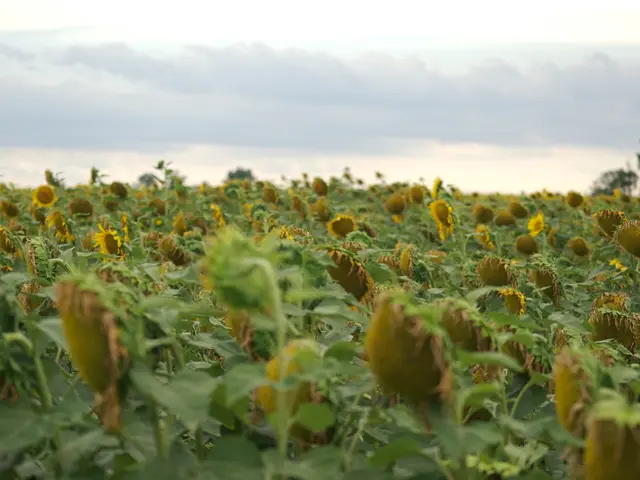Guidelines for Treating Soil Before Sowing Vegetable Gardens: A Pre-Planting Manual
Creating the perfect environment for your vegetable garden starts with a well-prepared bed. Here's a step-by-step guide to help you remove weeds, rocks, and debris, and prepare your garden for a successful growing season.
- Remove Weeds
- Hand-pull weeds when the soil is moist, making it easier to remove the roots. Use tools like a hoe to decompact the soil and weaken underground weed roots.
- If necessary, kill weeds by pouring boiling water directly on them or cover the soil with tarps or black plastic (solarization) to block light and kill seeds in the soil.
- For persistent weeds, consider using a tarp or black plastic to prevent light from reaching the soil and kill seeds over time. However, be cautious as it can affect soil health if left too long.
- Remove Rocks and Debris
- After weed removal, use a rake or garden tool to collect and remove all rocks, sticks, and debris.
- Level the soil by scraping mounds and filling hollows to create a firm, flat surface.
- Prepare for Weed Prevention (Optional)
- Consider laying landscape fabric or weed barrier membranes over the soil to prevent weed regrowth. Cut fabric to fit the bed shape, overlap seams by 6 inches, and secure with landscape staples or garden pegs to prevent shifting.
- If using rocks as mulch or ground cover, place landscape fabric underneath them after soil preparation and debris clearing to enhance weed control.
Additional Tips
- Mulching with organic material after clearing can suppress new weeds while improving soil moisture.
- Regularly monitor and remove new weed sprouts promptly to prevent re-establishment.
- If pests disturb barriers, repair damage quickly and keep the garden clean to deter them.
In addition to these steps, adding organic matter like compost or aged manure can improve the soil's ability to hold nutrients and water. Testing soil type and drainage can help determine if it is ideal for a vegetable garden, with a good mix of sand, silt, and clay (loam) being the best. The ideal pH range for a vegetable garden is between 6.0 and 7.0. Soil test kits can check the levels of nitrogen, phosphorus, and potassium, and should be tested every 3 to 5 years.
By following these best practices, you'll be well on your way to creating a weed-free and rock-free vegetable garden bed that will provide a bountiful harvest.
[1] Gardenerdy.com, "How to Prepare a Vegetable Garden Bed: A Step-by-Step Guide" [2] Gardening Know How, "How to Prepare a Vegetable Garden Bed" [3] The Spruce, "How to Prepare a Vegetable Garden Bed" [4] Fine Gardening, "Preparing a Garden Bed: A Comprehensive Guide" [5] University of Illinois Extension, "Preparing a Garden Bed"
- Maintaining a pleasant home-and-garden lifestyle involves not only preparing a vegetable garden but also ensuring the growth area is free of weeds and rocks, which can hinder the garden's success.
- After preparing the vegetable garden bed, consider enhancing your home-and-garden environment by incorporating attractive features such as a home-and-gardening project like a basket garden or container plants around the edges of the vegetable garden, adding a touch of aesthetics to your gardening efforts.





